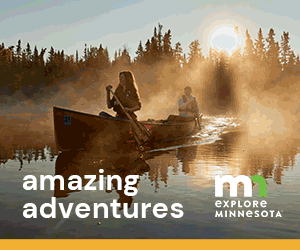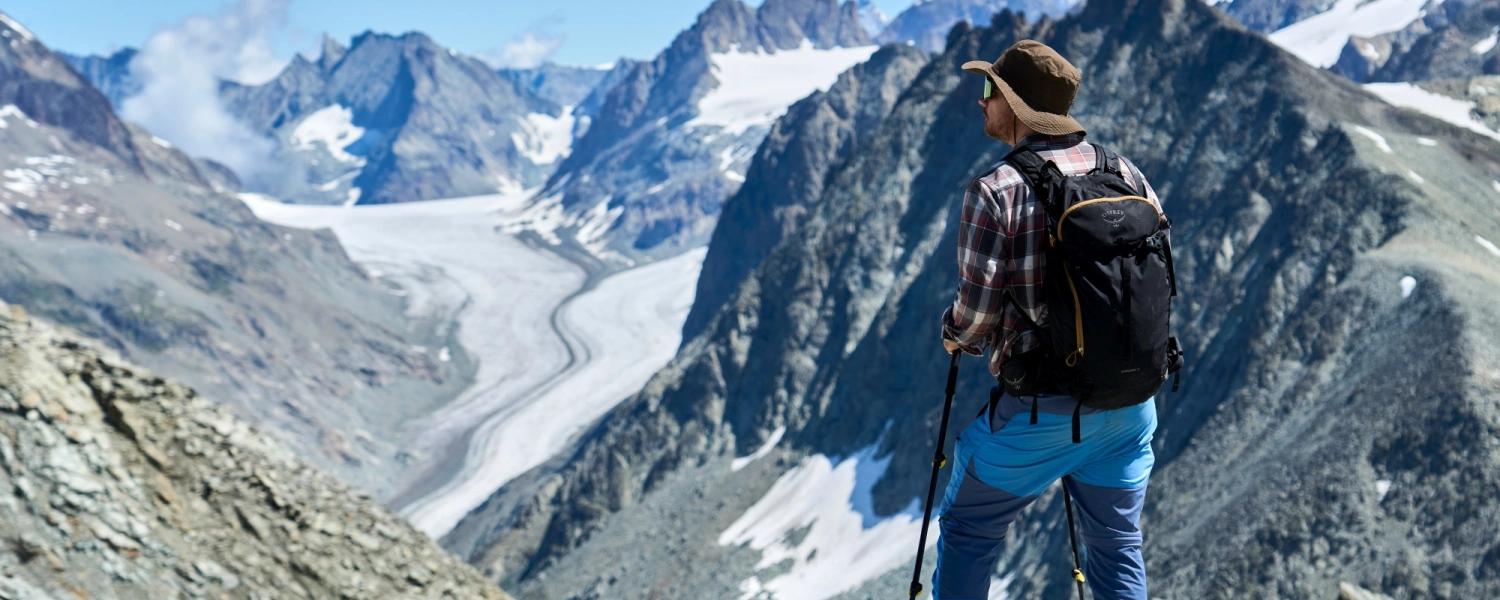- Details
- Written by: Mike Walker
Despite the rapid increase in popularity of international trekking around the world, it is still possible to travel up-country away from roads and traffic and surround yourself with rural simplicity and values. In Nepal, you can spend days winding your way through the wooded foothills, along steep-sided gorges and up into glacier-fi lled amphitheatres to stand face to face with the highest mountains in the world.
Our beginner’s guide will take you away from the maddened crowd, and provide everything you’ll need to know about preparing for your trip, planning the best routes and staying safe on the mountain. Get ready for the ultimate Himalayan adventure.
Before you book
Am I taking on more than I can manage?
Despite many misconceptions, people from all age groups and social backgrounds are found trekking in the Himalayan mountains (most widely known as the Himalayas, but more properly called the Himalaya, without the final ‘s’). The majority of trekkers tend to be aged between the early 20s and mid 40s, and there is a healthy mix of seasoned trekkers and those who have never set foot on a mountain. The great thing is you don’t have to be Everest conqueror Sir Edmund Hillary to enjoy the majesty of the Himalayas. There is a huge choice of treks suitable for all ages and abilities, from five to 85.
So how do the Himalaya match up to the Alps?
The minimum height of a Himalaya is at least 4,000m.The highest Alp is Mont Blanc at 4,810 metres. The highest Himalayan peak is Mount Everest, at 8,848 metres. The range is also home to the world’s other 14 mountains which reach or exceed 8,000 metres.
In the Himalayas trekking tends to take place on average between 3,000-5,000 metres, so it would be like spending a lot of time at the top of Mont Blanc! In the Alps accommodation is rarely above 2,500 metres, so while you might trek higher up during the day, you will not be exposed to great heights for a longer time.
Technically, trekking in the Himalayas does not need to be any harder than the Alps – the only real difference is the length of trek (often much longer in the Himalayas) and the higher altitude. High altitude presents its own unique challenges, which we will come to a little later (see page 24, if you can’t wait), but if you take the right precautions, the Himalayan range is an ideal place for your first trek.
So which country should I choose?
There are four countries that straddle the Himalaya: India, Bhutan, Nepal and Tibet. Each offers its own unique experience, and presents its own challenges. So which is the best for beginners?
Nepal: the ideal place for first-time trekking, and so the one we concentrate on here. The country has a solid infrastructure, one of the best road networks and offers a wide range of treks for all ages and abilities. With one of the best safety records, security is also good.
India: culturally very diverse, India has a large number of easy treks. However, there have been issues with security in Northern India in recent years, particularly in the Kashmir region.
Bhutan: we would suggest this is an option for experienced trekkers due to high prices and a higher percentage of ‘technical’ routes.
Tibet: though one of the most culturally rich countries to visit, it is very inaccessible in most areas. There is little infrastructure and transport networks are poor. This makes it a high-risk area in the event of accidents and thus recommended for experienced trekkers only.
Getting prepared
Experience & Fitness
For a first-timer, it’s not a good idea to just turn up and trek. Fitness is key to maintaining health and to prevent exhaustion or injury. We recommend starting an exercise regime four to six months before your trek.
In Nepal you need to walk at least about 10 km (about 4-5 hours) every day. An easy teahouse trek with Nepali support (guide/ porter) is quite attainable for anyone who is reasonably walking fit. A good benchmark is half a day’s hill walking, with rucksack, along one of Britain’s popular routes in the Lake District, or a Munro in the Scottish Highlands.
In essence, it’s about building up endurance fi tness, and the best way to do this is through hill walking. We’d also advise you to buy your kit well in advance and go on several domestic trips before your Himalayan trek. This will give you the chance to get comfortable in your kit, and unearth any problems or niggles.
Find out, fit in
Before you depart, find out about your destination. Buy a guidebook and a dictionary and learn as much as you can.
Those boots are made for walking!
Buy a pair of sturdy, lightweight, well-fitting walking boots that provide ankle support. Walk your new boots in at least four weeks before your trek starts to prevent blisters.
Take a 'teahouse trek'
These are ideal for beginners. Teahouses are lodges run by families and provide basic accommodation, hot meals, local knowledge and security.
Booking your trip
Choose the right tour operator
Choosing the right tour operator is a critical first step in your journey to the Himalayas. You need to find a Himalayan specialist, with strong local knowledge, excellent contacts and a good track record. Here are the top ten questions you should be asking:
1. Do you specialise in this destination?
Specialists have more local knowledge and are better placed to uncover the hidden gems.
2. What is included in the price of the trip and what additional expenses should I expect?
You should receive transparent and clear costs for the holiday. It is also better to pay everything upfront so there are no surprises? And on meals, If it’s just a bed and breakfast deal, ask how much spending money you would need to cover other meals?
3. Are you an ethical operator?
What is your commitment to responsible tourism or ecotourism? Ethics is clearly a personal matter, but we would always advise travelling with a tour operator that has policies on responsible travel, the environment, and which supports projects/charities in the target destination. 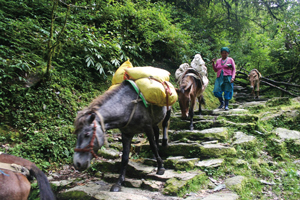 4. What training do the guides undergo?
4. What training do the guides undergo?
First aid, English, experience in the job, It’s also worth asking how long they’ve been working with the company?
5. What do your customers say about your service?
Always seek customer feedback.
6. What is your cancellation and refund policy?
It is very important to carefully read and understand this policy before parting with any money. Ask the tour operator what will happen if the trip is cancelled. Will you receive a full refund? Do you protect my money? Your operator should be bonded with an association such as ATOL, ABTA or TTA (the Travel Trust Association).
7. Do they tailor the trip to provide the experience I want, or do they sell package trips?
Bespoke trips are always better than package holidays.
8. What are your safety procedures?
The operator should be able to clearly explain their procedures.
9. Is the information they provide accurate?
Double check any information online, such as place names. Accuracy will refl ect the competency of the company.
10. What will be the group sizes on the trip?
If I book with you will I be joining 40 other people in a large group or can I travel by myself or in smaller teams?
To get you started, we have suggested four tour operators which tick all the right boxes:
Himalayan Footsteps
Olly’s own company is a Himalayan Tour specialist, operating treks and adventure holidays to Nepal, India, Bhutan and Tibet. Offers flexible, bespoke and ethical packages and can organise almost any kind of tour from volunteering to cultural, wildlife or adventure trips.
www.himalayanfootsteps.com
Himalayan Trails
Experienced and professional, delivering great travel experiences. Owned and run by husband and wife duo Mads and Clare. Specialists in mountain biking and road cycling routes.
www.himalayan-trails.com
Arun Treks and Expeditions
Ideal for travellers looking for a slightly different cultural – more traditional – experience. They have considerable experience and expertise in mountaineering, peak summiting, and technical climbing in Nepal.
www.arunexpedition.com
Mustang Trails
A small, unique operator run by Vidya, a remarkable young lady from the Mustang region of Nepal. She employs local people only, and delivers a friendly, personal service, specialising in trekking holidays to Mustang.
www.mustangtrailsnepal.com
Where should I go?
Recommended regions
The Annapurna Conservation Area
The Annapurna Conservation Area (ACA) is one of the most beautiful trekking regions in Nepal and is ideal for beginners. ACA boasts some of the world’s highest peaks and deepest valleys, including the famous Kali Gandaki Valley, Nepal’s largest conservation region. Treks through the Annapurna region start from the picturesque lakeside trading town of Pokhara and can take you up to a maximum elevation of 5,416 metres.
Annapurna is the no1 destination for beginners because;
• It is the most accessible trekking region in Nepal.
• A small airport in the mountains at Jomsom allows quick and easy access.
• It offers friendly, comfortable and safe accommodation en route.
• It has breathtaking views of Annapurna’s snow-capped peaks throughout.
• There is a wide choice of shorter, lower routes suitable for beginners.
• It is one of the richest regions for Himalayan fl ora and fauna: 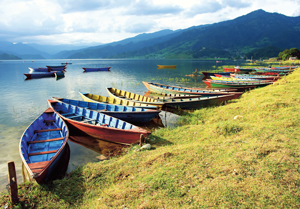 Kathmandu Valley
Kathmandu Valley
The Kathmandu Valley, surrounding the capital city of Nepal, affords many incredible and varied treks for all levels of enthusiasts. If you hope to see all the major sights of the valley -- Kakani, Shivapuri, Nagarkot, Dhulikhel, Namo Buddha -- then a trek along the longest trail in the Kathamndu Valley is the trip for you.
The Kathmandu Valley Trek, lying around 1,050 metres to 2,800 metres above sea level, offers 180-degree mountain views stretching from the far western Annapurna Range to Everest in the east.
This beautiful region is also highly populated, providing many opportunities to meet local people, and learn more about their fascinating culture and lifestyles. In spring the region is alive with blooming rhododendrons, magnolias, and a host of wild, colourful flowers. In autumn and winter the mountain views of the entire Annapurna Range, Mt Manaslu and the Rolwaling and Everest Ranges are simply not to be missed.
The Kathmandu Valley Trek is also ideal for birdwatchers, with more than 200 different species living in the region. A good pair of binoculars is a must!
When to go
The best time to go is before and after the monsoon, which runs between June and August. The rain can cause landslides and avalanches, and trekking routes may well be closed off. Also, December to January are not suitable due to harsh winter conditions. Ideal months are September to November and March to May.
Make sure you have access to accurate weather reports before you leave for the Himalaya, and while you are there. www.nepalhomepage.com/hotlinks/weather/ is a decent website for long-term planning and picking the right season. However, local reports tend to be the most accurate, particularly as many regions have their own micro climates. Gather relevant information from your guide or local newspapers.
Political unrest: Keep an eye out for political disturbances in your region. National or regional strikes are often announced at the very last minute and can severely limit transport around the country.
Thankfully, in recent times strikes have been few and far between. Politicians have pledged not to ‘stir up’ strikes for the next three years because of the negative impact they have on tourism.
Culture up
The Himalayas are a cultural haven, but this can sometimes be confusing. Here are a few top tips before you go:
• Remember, shaking the head means yes!
• It is considered rude to step over someone’s feet, so always walk around
• Shaking hands is not a common form of greeting; instead press the palms together in a prayer-like gesture and say ‘Namaste’
• Remove your shoes when entering a home, temple or monastery (and leather items in Hindu temples)
• Avoid smoking and wearing inappropriate or revealing dress
Recommended treks
TREK: Landrung Trek, Annapurna Region, Nepal
THE ROUTE: Pokhara – Dhamphus – Landrung – Ghandrung – Pokhara
LENGTH: Approx 30 miles TIME: 4 days (5/6 hours per day)
DIFFICULTY: Beginner
COST: £540 (excl international fl ight, travel insurance, Nepal entry visa, tips, personal spending money) 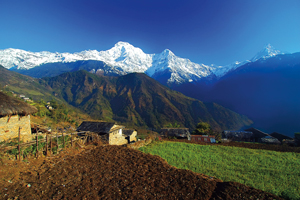 THE TREK: The Landrung trek is located in the heart of the Annapurna Conservation Area. The trek starts from the hustle and bustle of Pokhara, Nepal’s third largest city, home of the famous Gurkha warriors and once heart of the vibrant Tibet-India trade route.
THE TREK: The Landrung trek is located in the heart of the Annapurna Conservation Area. The trek starts from the hustle and bustle of Pokhara, Nepal’s third largest city, home of the famous Gurkha warriors and once heart of the vibrant Tibet-India trade route.
Over the next four days the trek takes you through the Annapurna mountain range along the winding Kali Gandaki river, through magical forests near Suikhet Phedi, and punctuated with cosy overnight stays in the traditional teahouses at Dhamphus and Landrung.
Eventually the route takes you to the trek’s highest elevation of 1,950 metres, at Ghandrung, one of the largest Gurung settlements in Western Nepal with fabulous views of Gangapura, Machhapuchhre (Fishtail), Mount Annapurna and other famous snow-capped mountains.
Finally the route winds its way back to Pokhara for a well-earned cup of traditional green tea.
HIGHLIGHT: Sunset over the snow-capped Machhapuchhre mountain – Machhapuchhre is known to locals as the fishtail because of its unusual shape.
TREK: Ghorepani Trek, Annapurna Region, Nepal
THE ROUTE: Nayapul – Ghandruk – Tadapani – Ghorepani – Pokhara
LENGTH: Approx 30-35 miles
TIME: 5 days (5/6 hours per day)
DIFFICULTY: Beginner COST: £603 (excl international flight, travel insurance, Nepal entry visa, tips, personal spending money)
THE TREK: A gentle adventure trek in Nepal’s ‘middle hills’ which takes you up to an elevation of 3,200 metres. The trek showcases the awesome backdrop of the Annapurna Range throughout and is well suited for beginners or those with limited time but who still want a real Himalayan experience.
The trek starts from the tiny village of Nayapul after a 40-minute drive from Pokhara. The trail passes through lush rhododendron forests and the fascinating Gurung village of Ghandruk where fellow trekkers stop to swap stories and soak up the Nepali culture and ancient Himalayan traditions.
Along the way you pass the village of Tadapani which affords some of the trek’s best views of Annapurna South, Hiunchuli and Machhapuchhare, so have your camera ready.
Before heading back to Pokhara the trail leads you past Ghorepani, a beautiful village situated on top of a hill, surrounded by the Laligunras plant, the national flower of Nepal. (a type of rhododendron).
This popular trek, staying in teahouses, is suitable all year round except during the monsoon season – between July and August.
HIGHLIGHT: Unforgettable mountain panorama from Poon Hill overlooking the snow-capped Annapurna range.
Where to avoid for your first time
The treks below should be avoided if you have never been on a Himalayan trek before. These treks are for people who have trekked at altitudes of at least 4,000-5,000 metres on more than one occasion, and have some mountaineering experience behind them. The diffi culty of these treks is not only the technical challenge, but the ability to exert yourself for long periods at altitude.
NEPAL: Dolpo, Manaslu, Kanchenjunga
These three treks are only for real adventurers. A high level of preparation and conditioning is essential with altitudes often exceeding 5,000 metres. The main component is a long, high-altitude, uphill trek with some rope work that requires a high level of physical and mental stamina. All treks involve camping for relatively long periods, between 20-28 days or sometimes more. Excellent physical condition is essential and mountaineering experience is preferable.
TIBET: Mt Kailash, Namtso Trek, Ganden to Samye Monastery Trek, Everest Advance Base Camp Trek, Kharta Valley Trek
Almost all of these famous routes begin at elevations of 4,000 metres with altitudes reaching 5,000 metres in some places, so careful preparation, experience and the right gear are a must. Tibet is one of the world’s most extraordinary destinations with adventure lurking around almost every corner. Lhasa, the capital, lies high in the arid wilderness of the Tibetan mountains. Its name literally means the ‘Roof of the World’ which is no idle statement. The valley bottoms of Tibet are higher than many of the highest mountains in neighbouring regions and its snow-covered plateau is the highest in the world. Apart from Everest, which Tibetans see from ‘the other side’, many mountains are over 15,000 feet so the choice for beginners is more limited here.
BHUTAN: Bumthang Cultural Trek, Dagala Thousand Lakes Trek, Jomolhari Trek, Snowman Trek
Bhutan is not advisable as a destination for beginners largely due to high costs compared to Nepal or India. Furthermore, almost all trekking routes in Bhutan go above 3,000 metres – altitude sickness is a frequent problem for trekkers crossing the high mountain passes. The Snowman Trek is said to be the hardest trek in the world, taking 24 days to complete and covering 12 passes between 4,500 and 5,300 metres and with overnight stays at between 3,700 and 5,100 metres. Defi nitely one to avoid if you’re a fi rst timer!
General trekking tips
Be realistic, start low: Beginners should not exceed around 3,700m on their first trek. Start walking at an altitude of less than 1,500m with a gradual ascent throughout the trek.
Avoid camping: We advise that beginners do not camp on their first trek. Instead, stay in one of the many teahouses (lodges).
Purify your water: Start with boiled water in the mornings and purify mountain water as you go along. Always use iodine, not chlorine. Iodine has a slightly unpleasant taste, however, so add a soluble orange vitamin C tablet to disguise the taste.
Feed up: A wholesome, nutritious diet is an essential part of the trekking. Rice, chapatti, pulses and seasonal vegetables are the best choice. Carry high energy foods eg, dried fruits, chocolate, sweets, packet soup, biscuits, butter, cheese, noodles.
Drink plenty of fluids: Trekking for long periods poses many distractions, and it’s easy to forget to drink water. Get into a routine of sipping every 15 minutes or so.
When highs lay you low
Altitude sickness: the facts
Altitude sickness, also known as acute mountain sickness (AMS), can occur in some people as low as 2,500m but serious symptoms do not usually occur until over 3,600m, even then it is not the height that is important, rather the speed at which you ascend to that altitude.
AMS is actually more common in fit young men as they are more likely to attempt a rapid ascent by racing up the mountain. As a general rule, it is far safer (and more comfortable) to avoid altitude sickness altogether by planning a sensible itinerary that allows for gradual acclimatisation to altitude as you ascend. Remember, you can hurry back down as fast as you like!
What causes altitude sickness?
The percentage of oxygen in the air remains essentially constant at 21 per cent up to about 21,330 metres, but the air pressure (and therefore the number of oxygen molecules) drops as altitude increases – consequently, the available amount of oxygen to sustain mental and physical alertness decreases above 3,050 metres. Altitude sickness usually does not affect persons travelling in aircraft because the cabin altitude in modern passenger aircraft is kept to the equivalent of 2,440 metres or lower.
Potential consequences
High Altitude Pulmonary Oedema (HAPO) results from fluid build-up in the lungs. This fluid prevents effective oxygen exchange. As the condition becomes more severe, the level of oxygen in the bloodstream decreases, which leads to cyanosis, impaired cerebral function, and death. 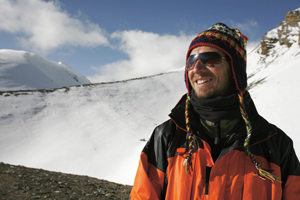 How to avoid altitude sickness
How to avoid altitude sickness
The only cure for altitude sickness is either acclimatisation or descent. Here are our top tips to keep you fi t and well on the mountain:
• Drink plenty of water. What you think is altitude sickness might actually be dehydration, caused by the higher rate of water vapour lost from the lungs at higher altitudes. Avoid caffeine and alcohol, as these can increase the likelihood of dehydration. If it’s humid and you’re losing a lot of water through perspiration, maintain an electrolyte balance with sports drinks targeted specifi cally for this purpose.
• If you have a headache, drink one litre of fl uid, and take some acetaminophen (brand name: Tylenol). If the headache disappears completely and rapidly, and you have no other symptoms of AMS you’re probably dealing with dehydration rather than altitude sickness.
• A slow and steady ascent is vital to give your body enough time to get used to the rarefi ed air.
• Eat a high-calorie diet while at altitude.
• Follow the ‘golden rule’ – climb high, sleep low. Once you’ve made your way up past 3,000 metres (10,000 feet), do not ascend more than 300 metres (1,000 feet) per day to sleep. You can climb as high as you want, just make sure that you come back to a base camp that’s no more than 300 metres higher than your previous night’s sleeping elevation. This is also a useful guide if you’re driving to a high altitude.
• Know the symptoms – if you spot any of the signs of altitude sickness, either with yourself or those around you, do NOT continue the climb. Stop and if necessary descend until the symptoms disappear.
• Take it easy. The last thing you should do is to overexert yourself. It is harder to breathe at higher altitude and even if you are fi t, you can still feel the effects if you push yourself too hard, too quickly. Resting at the altitude at which you became ill is often the most effective remedy (other than descent). You’ll usually feel better in one or two (or up to four) days.
• Avoid tobacco, alcohol and other depressant drugs, including barbiturates, tranquilisers, sleeping pills and opiates such as dihydrocodeine. These further decrease the respiratory drive during sleep, resulting in a worsening of symptoms.
Symptoms
Mild AMS:
• headache
• nausea and dizziness
• loss of appetite
• fatigue
• shortness of breath
• disturbed sleep
• general feeling of malaise
Moderate AMS:
• severe headache that is not relieved by medication
• nausea and vomiting, increasing weakness and fatigue
• shortness of breath
• decreased co-ordination (ataxia)
Severe AMS:
results in an increase in the severity of the aforementioned symptoms including: shortness of breath at rest, inability to walk, decreasing mental status, fl uid build-up in the lungs.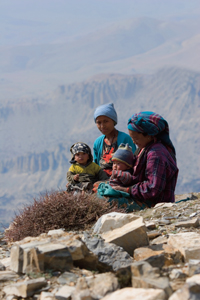 All the Info...
All the Info...
Biography
Himalayan Footsteps is an ethical tour operator specialising in adventure, leisure, volunteering, cultural and wildlife trips to the Himalayas. The company is based in Edinburgh, and was founded three years ago by Olly Margry who had a passion to share his experience of the Himalaya. Olly has more than 11 years experience trekking and travelling through all four of the Himalayan countries, from Tibet and Nepal to Bhutan and through northern India. He believes that by harnessing local knowledge, operating safely and ethically, and staying focussed on the customer, the very best holiday memories can be delivered.
Costs
Flights: The international flight cost by Etihad Airways departing from London Heathrow to Kathmandu starts from £609 and departing from Manchester is £689 per person, inclusive of all taxes and fees. (Current airfare)
Further information
0131 5100522
www.himalayanfootsteps.com
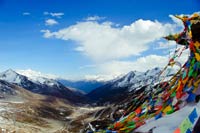 Going up in the world
Going up in the world 